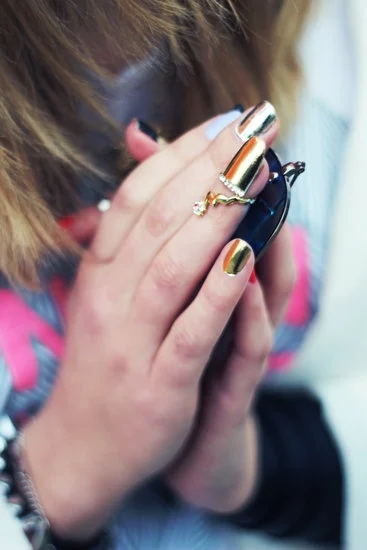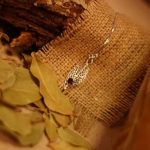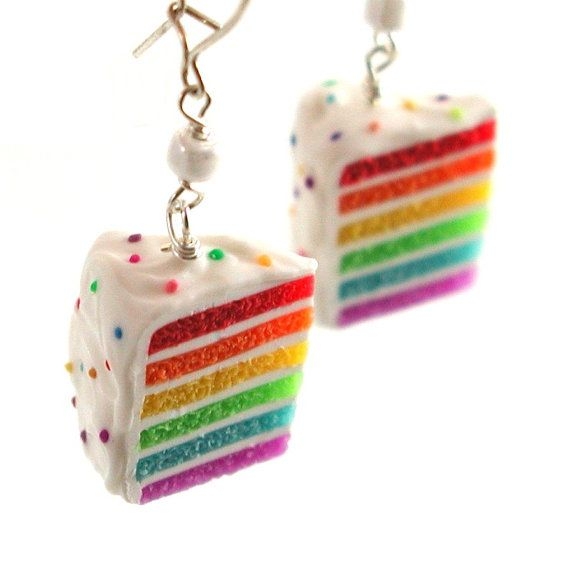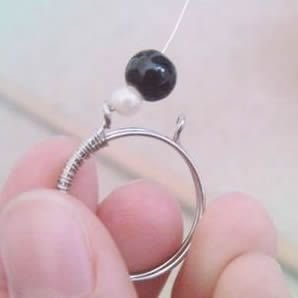What is the difference between Victorian and Edwardian bead jewelry? Antique jewelry has always held a special allure for collectors and enthusiasts, with Victorian and Edwardian bead jewelry being particularly sought after. These exquisite pieces offer a glimpse into the past, captivating us with their intricate designs and historical significance.
Originating in the 19th century during the Victorian era, bead jewelry reflected the opulence and romanticism of the time. The Victorians were known for their love of symbolism and sentimentality, which is evident in the elaborate patterns and ornate details adorning their bead creations. With a focus on craftsmanship and luxury, Victorian bead jewelry often featured rich colors, intricate beading techniques, and a mix of materials like pearls, corals, and glass beads.
As the Victorian era transitioned into the Edwardian period, there was a shift towards lighter, more delicate designs in bead jewelry. Edwardian bead pieces embraced a softer aesthetic, characterized by simpler patterns, refined elegance, and an emphasis on white metals like platinum. This era marked a departure from the heavy ornamentation of Victorian jewelry to embrace a more ethereal and graceful style.
Historical Background
Victorian bead jewelry has a rich history that dates back to the 19th century during the reign of Queen Victoria. The Victorian era, which spanned from 1837 to 1901, was characterized by elaborate designs, exquisite craftsmanship, and attention to detail in jewelry making. Bead jewelry became immensely popular during this period, with artisans using a variety of materials such as glass beads, seed pearls, coral, and amethysts to create intricate pieces that reflected the opulence of the time.
The key difference between Victorian and Edwardian bead jewelry lies in their design aesthetics. Victorian bead jewelry is known for its ornate and complex patterns, often featuring motifs inspired by nature, such as flowers, leaves, and insects.
These pieces were typically larger in size and more grandiose in style compared to the delicate and understated designs of Edwardian bead jewelry. The use of bold colors and intricate beadwork in Victorian jewelry set it apart as a symbol of wealth and status during that era.
During the transition from the Victorian era to the Edwardian era at the turn of the 20th century, there was a shift towards lighter and more feminine designs in bead jewelry. Edwardian bead jewelry embraced a softer color palette, incorporating pastel hues and subtle gemstones like diamonds and pearls.
The styles became more delicate with filigree work and lacy designs becoming prominent features. This evolution from elaborate Victorian pieces to elegant Edwardian creations marked a significant change in fashion trends at the time.
| Victorian Bead Jewelry | Edwardian Bead Jewelry |
|---|---|
| Known for ornate and complex patterns | Characterized by delicate and understated designs |
| Uses bold colors with intricate beadwork | Incorporates softer color palette with subtle gemstones |
| Larger in size with grandiose style | Smaller and more delicate pieces with filigree work |
Characteristics of Victorian Bead Jewelry
Victorian bead jewelry, originating in the 19th century during the Victorian era, is known for its elaborate and intricate designs that reflect the opulence of the time. These pieces often featured highly detailed patterns, intricate floral motifs, and ornate filigree work that appealed to the romantic sensibilities of the Victorian period.
The jewelry was typically crafted using a combination of materials such as glass beads, seed pearls, gemstones like garnets and amethysts, and precious metals like gold and silver. One distinguishing feature of Victorian bead jewelry is the use of mourning jewelry, which incorporated black beads or gemstones to commemorate deceased loved ones.
Transitioning into the Edwardian era at the turn of the 20th century, bead jewelry underwent a significant transformation characterized by lighter and more delicate designs. Edwardian bead jewelry embraced a more refined aesthetic inspired by Art Nouveau motifs and nature themes such as flowers, butterflies, and bows.
These pieces were often crafted with pastel-colored gemstones like peridots, aquamarines, and pearls to complement the light color palette popular during this period. The shift from heavy ornate designs of the Victorian era to delicate feminine styles of Edwardian bead jewelry reflected changing tastes influenced by evolving social norms.
When comparing Victorian and Edwardian bead jewelry, one can observe distinct differences in style and design. While Victorian bead jewelry is known for its boldness and complexity in design with rich colors and heavy embellishments, Edwardian bead jewelry exudes a sense of airy elegance with delicate filigree work and pastel-colored gemstones.
Another noticeable difference lies in the use of materials – Victorian bead jewelry often featured darker color palettes with deep reds and blues alongside black beads for mourning purposes, whereas Edwardian bead jewelry leaned towards lighter hues such as white pearls, pale pink tourmalines, and aquamarines.
| Victorian Bead Jewelry | Edwardian Bead Jewelry |
|---|---|
| Intricate Designs | Lighter & Delicate Designs |
| Rich Colors & Heavy Embellishments | Pastel-Colored Gemstones |
| Darker Color Palettes | Lighter Hues & White Pearls |
Evolution to Edwardian Bead Jewelry
Victorian bead jewelry was known for its intricate designs and heavy, ornate styles that reflected the opulence of the era. However, as the Victorian era drew to a close, there was a noticeable shift in design aesthetics that marked the transition to Edwardian bead jewelry. During the Edwardian period, which followed the death of Queen Victoria in 1901 and lasted until the outbreak of World War I in 1914, there was a move towards lighter, more delicate designs in jewelry.
One of the key differences between Victorian and Edwardian bead jewelry lies in their respective design elements. While Victorian bead jewelry often featured bold patterns with intricate details, Edwardian bead jewelry embraced a more ethereal and delicate aesthetic. In Edwardian bead jewelry, you can expect to see lighter and airier designs with subtle embellishments that exude elegance and grace.
To further illustrate the evolution from Victorian to Edwardian bead jewelry, it is essential to highlight the changing fashion trends of the time. The late Victorian era was characterized by heavy fabrics and embellishments, which extended to jewelry as well.
In contrast, the Edwardian period saw a shift towards lighter fabrics such as lace and silk, influencing the design of accessories like bead jewelry. This change in fashion sensibilities played a significant role in shaping the unique styles of both Victorian and Edwardian bead jewelry.
- Victorian bead jewelry: Bold patterns with intricate details
- Edwardian bead jewelry: Lighter and airier designs with subtle embellishments
- Late Victorian fashion trends: Heavy fabrics and elaborate embellishments
- Edwardian fashion trends: Light fabrics like lace and silk influencing jewelry design
Key Differences in Style
Victorian and Edwardian bead jewelry may appear similar at first glance, but upon closer inspection, the key differences in style become apparent. The Victorian era was known for its ornate and intricate patterns, reflecting the intricate craftsmanship of the time. Victorian bead jewelry often featured complex designs with detailed filigree work, floral motifs, and symbolic elements such as hearts and crosses. These pieces were sentimental in nature, often incorporating hair or other personal mementos.
On the other hand, Edwardian bead jewelry marked a departure from the heavy and elaborate Victorian styles towards lighter and more delicate designs. The Edwardian era, which spanned from 1901 to 1910 during King Edward VII’s reign in Britain, embraced a more refined aesthetic characterized by airy and graceful pieces. Edwardian bead jewelry often featured lace-like metalwork, delicate engravings, and an emphasis on white or pastel-colored gemstones such as pearls and diamonds.
Popular Styles of Victorian Bead Jewelry
Victorian bead necklaces were typically long strands that could be worn doubled or tripled around the neck, creating a luxurious layered look. Bracelets were adorned with multiple strands of beads intertwined with intricate metalwork. Brooches and earrings often featured dangling beads in various shapes and sizes, adding movement and visual interest to the piece.
Transition to Edwardian Bead Jewelry
As society shifted towards a more relaxed lifestyle during the Edwardian era, bead jewelry followed suit by adopting lighter designs that complemented the fashionable clothing styles of the time. The use of platinum became more prevalent during this period due to its strength and malleability, allowing for intricate metalwork that was characteristic of Edwardian jewelry design. Pearl strands became increasingly popular as they symbolized purity and elegance, making them a favorite choice for necklaces and bracelets.
Materials Used
During the Victorian era, bead jewelry was highly popular and crafted using a variety of materials. One of the most common types of beads used in Victorian bead jewelry were seed pearls. These tiny pearls were meticulously strung together to form intricate patterns and designs, often seen in necklaces, bracelets, and earrings.
Additionally, Victorian bead jewelry also featured gemstones such as amethyst, garnet, turquoise, and citrine. These colorful gemstones were often combined with intricate beadwork to create stunning pieces that reflected the opulence of the era.
In contrast, Edwardian bead jewelry took a more delicate approach in terms of materials used. The shift from the Victorian to the Edwardian era brought about a preference for lighter and more refined designs. During the Edwardian period, white pearls became a favored choice for bead jewelry, symbolizing purity and elegance.
Platinum also became increasingly popular as a metal choice due to its lustrous finish and ability to showcase the brilliance of diamonds and other gemstones. Overall, Edwardian bead jewelry emphasized a softer color palette and a more understated elegance compared to the boldness of Victorian designs.
What is the difference between Victorian and Edwardian bead jewelry can also be observed in the use of metals. In Victorian bead jewelry, yellow gold was commonly utilized for its warm hue that complemented the colorful gemstones and intricate beadwork.
On the other hand, Edwardian bead jewelry embraced platinum’s cool tone to enhance the luminosity of diamonds and pearls. This shift in metal preference contributed to the overall lightness and ethereal quality of Edwardian bead jewelry compared to the richness of Victorian pieces.
Cultural Significance
Victorian and Edwardian bead jewelry not only reflect the intricate craftsmanship of their respective eras but also serve as a window into the societal changes and cultural influences that shaped their designs. During the Victorian era, which spanned from 1837 to 1901, jewelry was used to convey status, sentimentality, and symbolism. The industrial revolution led to an increase in production and availability of beads, allowing for more elaborate and ornate designs in Victorian bead jewelry.
- Victorian bead jewelry often featured richly colored gemstones like garnets, pearls, and amethysts, set in intricate patterns that showcased the craftsmanship of the era.
- Themes of love, mourning, and nature were commonly depicted in Victorian bead jewelry, with pieces often incorporating sentimental symbols like hearts, flowers, or birds.
- Due to Queen Victoria’s personal preference for mourning jewelry after the death of her husband Prince Albert, black jet beads became popular in Victorian mourning jewelry.
In contrast, the Edwardian era followed the death of Queen Victoria in 1901 until World War I in 1914. This period marked a shift towards lighter and more delicate designs in bead jewelry. The rise of Art Nouveau and Art Deco movements influenced Edwardian bead jewelry, leading to simpler yet elegant styles that reflected a newfound appreciation for asymmetry and natural motifs.
- Edwardian bead jewelry favored softer color palettes such as pastel shades of pink, blue, and green along with white or cream-colored pearls.
- The use of platinum became prominent during the Edwardian era due to its ability to showcase diamonds and pearls without overpowering their delicate beauty.
- Butterflies, bows, garlands, and lace-like filigree details were common motifs seen in Edwardian bead jewelry.
The differences between Victorian and Edwardian bead jewelry go beyond aesthetics; they are a reflection of changing tastes, societal values, and design philosophies that captivate collectors and enthusiasts alike. By understanding these key distinctions in style and materials used between Victorian and Edwardian bead jewelry pieces can one truly appreciate their historical significance and enduring allure.
Collectibility and Value
Victorian and Edwardian bead jewelry hold a special place in the hearts of collectors due to their rich history, intricate designs, and timeless appeal. The craftsmanship and attention to detail exhibited in these pieces make them highly sought after in the world of antique jewelry. What sets Victorian bead jewelry apart from Edwardian bead jewelry is not only the design but also the cultural significance attached to each era.
Victorian bead jewelry dates back to the 19th century during the reign of Queen Victoria, known for its ornate and elaborate designs. These pieces often featured intricate patterns created with a variety of materials such as glass beads, pearls, and gemstones. The Victorian era was characterized by sentimentality and sentimental motifs were commonly incorporated into jewelry designs. This attention to detail and sentimental value adds to the collectibility of Victorian bead jewelry.
On the other hand, Edwardian bead jewelry emerged at the turn of the 20th century during the reign of King Edward VII, moving away from the heavy, elaborate designs of the Victorian era towards lighter, more delicate styles. Edwardian bead jewelry favored softer colors, delicate filigree work, and a focus on femininity.
This shift in design aesthetics reflected changing societal norms and tastes during this period. Collectors are drawn to Edwardian bead jewelry for its graceful elegance and understated beauty that sets it apart from its Victorian predecessor.
The value of Victorian and Edwardian bead jewelry is influenced by a variety of factors including rarity, condition, provenance, and craftsmanship. As these pieces continue to be treasured for their historical significance and exquisite design, collectors are willing to invest in these antique accessories. Whether it’s a stunning Victorian beaded necklace or an elegant Edwardian beaded bracelet, these pieces carry with them a sense of nostalgia and sophistication that transcends time.
Conclusion
In conclusion, the difference between Victorian and Edwardian bead jewelry lies in the distinct styles and characteristics that define each era. Victorian bead jewelry is known for its elaborate designs, intricate patterns, and use of a variety of materials such as seed pearls, jet, and agate. On the other hand, Edwardian bead jewelry evolved towards lighter and more delicate designs, featuring simpler motifs and incorporating gemstones like diamonds and pearls.
Despite the shift in style from the Victorian to the Edwardian era, both types of bead jewelry continue to captivate collectors and enthusiasts with their timeless allure. The cultural significance of these antique accessories reflects the societal changes and influences that shaped fashion during the 19th and early 20th centuries.
Whether it’s the ornate elegance of Victorian bead jewelry or the understated sophistication of Edwardian pieces, these accessories hold a special place in the hearts of those who appreciate vintage craftsmanship.
For collectors and connoisseurs alike, Victorian and Edwardian bead jewelry represent more than just adornments – they are cherished pieces of history that tell a story of craftsmanship, design evolution, and cultural shifts. The enduring appeal of these antique accessories lies in their beauty, rarity, and the unique charm that sets them apart from modern jewelry trends.
So next time you come across a piece of Victorian or Edwardian bead jewelry, take a moment to appreciate not just its aesthetic value but also the rich history it carries within its intricate beads and exquisite designs.
Frequently Asked Questions
What Is the Difference Between Victorian and Edwardian Jewelry?
The main difference between Victorian and Edwardian jewelry lies in their respective time periods and styles. Victorian jewelry refers to pieces created during the reign of Queen Victoria from 1837 to 1901, characterized by intricate designs, sentimental motifs, and the use of gemstones like diamonds and pearls.
On the other hand, Edwardian jewelry emerged during the reign of King Edward VII from 1901 to 1910, featuring lighter and more delicate designs influenced by the Art Nouveau and Art Deco movements.
How Can You Tell if Jewelry Is Victorian?
Identifying Victorian jewelry often involves looking for certain classic characteristics such as intricate detailing, ornate metalwork, symbolic motifs like hearts or flowers, and the use of specific gemstones like garnets, pearls, or amethysts.
Another key indicator is the presence of mourning jewelry which was popular during this period due to Queen Victoria’s extended period of mourning after the death of her husband.
What Is the Difference Between Edwardian Style and Victorian Style?
The difference between Edwardian style and Victorian style can be seen in their distinct design aesthetics influenced by the time periods they represent. Victorian style is known for its heavier and more elaborate designs with an emphasis on romantic motifs inspired by nature and history.
In contrast, Edwardian style is characterized by lighter and more feminine pieces featuring lace-like filigree work, intricate platinum settings, and a focus on elegance over opulence. Additionally, Edwardian jewelry often featured influences from European design movements like Art Nouveau which introduced softer lines and floral motifs into jewelry design.

Welcome to my jewelry blog! My name is Sarah and I am the owner of this blog.
I love making jewelry and sharing my creations with others.
So whether you’re someone who loves wearing jewelry yourself or simply enjoys learning about it, be sure to check out my blog for insightful posts on everything related to this exciting topic!





